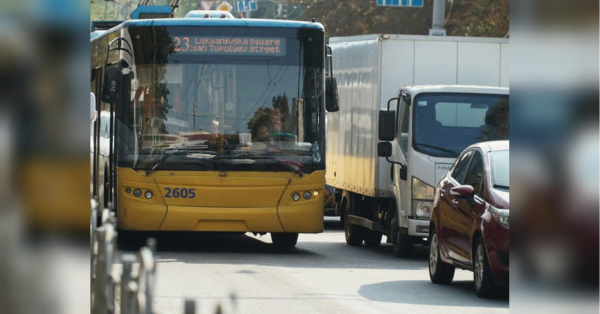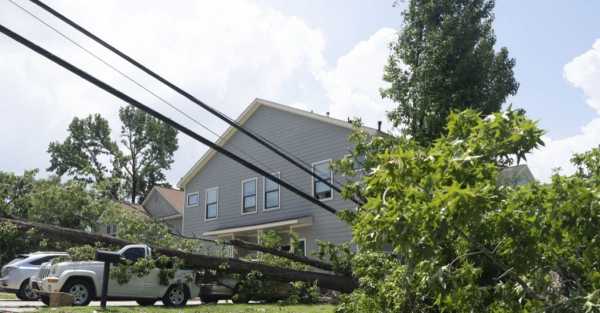
Pressure mounted on Houston’s power company as millions of residents still had no electricity nearly three days after Hurricane Beryl made landfall, stoking questions over how a city that is all too familiar with destructive weather was unable to better withstand a Category 1 storm.
With frustration growing as Houston residents experienced another sweltering day, a CenterPoint Energy executive faced a barrage from city leaders who wanted to know why it was taking so long to get the lights back on again.
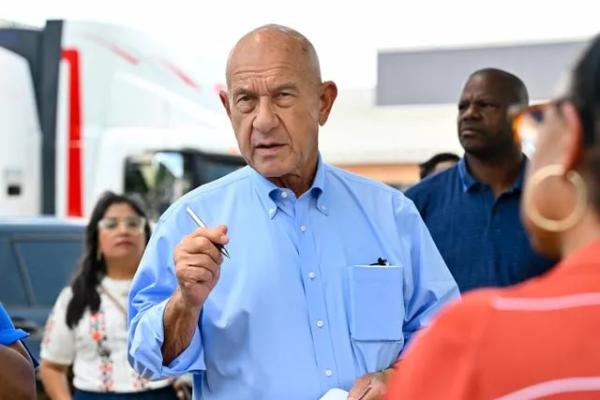
Mayor John Whitmire bluntly called on the firm to do a better job. “That’s the consensus of Houstonians. That’s mine,” Mr Whitmire said.
Late on Wednesday, CenterPoint Energy said it had “restored more than 1 million of the 2.26 million customers impacted by Hurricane Beryl in the first 55 hours of its restoration efforts, and continues to focus on restoring customers without power”.
“Based on its continued progress, the company expects to have an additional 400,000 customers restored by the end of the day on Friday, July 12 and an additional 350,000 customers restored by the end of the day on Sunday, July 14,” the utility’s statement said.
Beryl came ashore as a Category 1 hurricane, the weakest type, but has been blamed for at least seven US deaths — one in Louisiana and six in Texas. Earlier, 11 died in the Caribbean.
The storm’s lingering impact for many in Texas, however, was the wallop to the power supply that left much of the nation’s fourth-largest city sweltering days later in hot and humid conditions that the National Weather Service deemed potentially dangerous.
“Maybe they thought it wasn’t going to be so bad, but it’s had a tremendous effect. They needed to be better prepared,” construction worker Carlos Rodriguez, 39, said as he gathered apples, oranges and ready-to-eat meal packs at a food distribution centre. His family, with two daughters ages three and seven, was struggling, he said.
“We have no power, we’re going to bed late and I’m using a fan made out of a piece of cardboard to give my kids some relief,” Mr Rodriguez said.
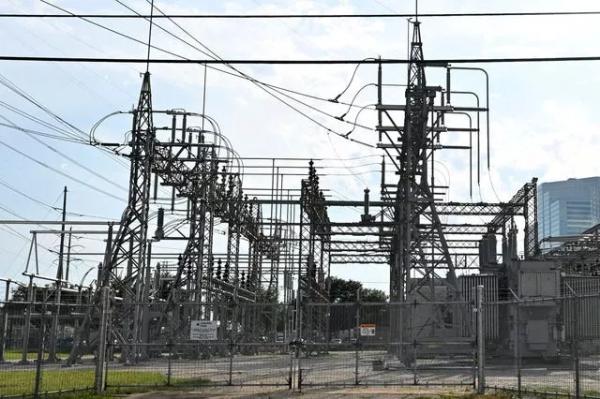
Hospitals were sending patients who could not be released to homes with no power to a sports and event complex where an area was set up to hold as many as 250 people. As of late Wednesday afternoon, about 40 patients had arrived and about 70 to 75 others were on their way, Office of Emergency Management spokesman Brent Taylor said.
Power outages peaked at 2.7 million customers after the storm made landfall on Monday, according to PowerOutage.us.
As of late Wednesday afternoon, there were 1.6 million customers without power in the Houston area, including 1.3 million CenterPoint customers.
Brad Tutunjian, the CenterPoint vice president for regulatory policy, defended the company’s response while facing pointed questions from the City Council and said more than one million customers had their power restored by Wednesday.
“To me, I think that’s a monumental number right there,” Mr Tutunjian said.
The company acknowledged that most of the 12,000 workers it brought in to help the recovery were not in the Houston area when the storm arrived.
Initial forecasts had the storm blowing ashore much farther south along the Gulf Coast, near the Texas-Mexico border, before it headed toward Houston.
CenterPoint would not ask third-party workers from other companies and municipalities to pre-position and “ride out” the storm “because that is not safe,” Mr Tutunjian said.
Instead, they are asked to be as close as possible to respond after the storm moves through.
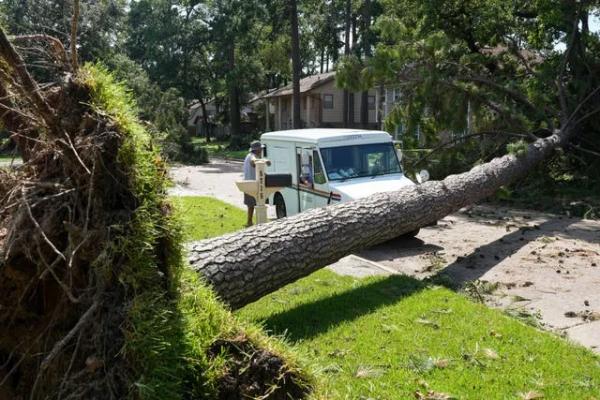
One major difficulty with Beryl was restoring power knocked out by fallen trees and branches, Mr Tutunjian said.
“When we have storms such as this, with the tree completely coming down … taking out our lines and our poles, that’s where all the time comes in to do the restoration work,” he said.
But council members pressed for answers about why CenterPoint, which has been in the Houston area for about 100 years, hasn’t been more aggressive in trimming trees during calm weather or putting more of its power lines underground.
The company has been putting new lines underground in residential areas for decades, Mr Tutunjian responded.
Two council members said they received a text about a house that burned down after reporting a downed power line. The texts reported the fire department said it could not do anything, and the utility did not respond.
City Council member Abbie Kamin called the extended lack of power a “life safety concern”.
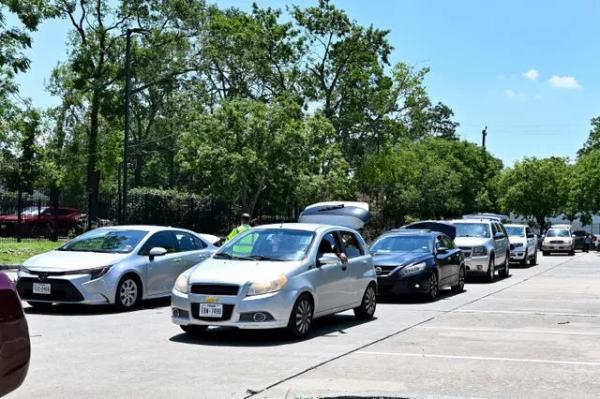
It is hardly the first time the Houston area has faced widespread power outages.
In 2008, Hurricane Ike made landfall on Galveston Island as a Category 2 storm, causing flooding and wind damage to the Houston area. It left about 2.2 million CenterPoint customers without power, according to the Harris County Flood Control District, which said that 75% of the power was restored within 10 days.
Houston was also hit hard in 2021 when Texas’ power grid failed during a deadly winter storm that brought plunging temperatures, snow and ice. Millions lost power and were left to ride out the storm in frigid homes or flee.
As recently as May, storms killed eight people and left nearly a million customers without power.
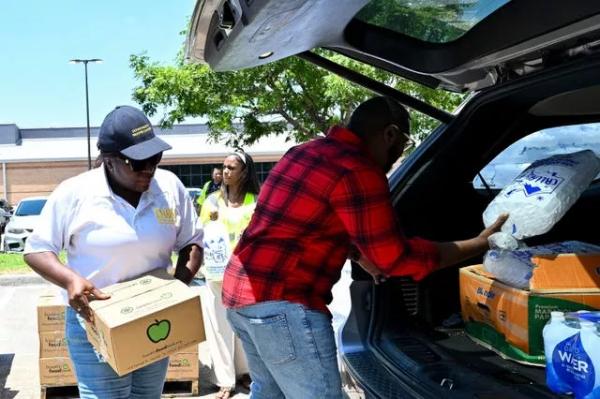
Sharon Carr, 62, a lifelong Houston resident, was frustrated.
“Every little thing affects us that way. There’s too much wind, we don’t have power. It’s raining a long time, we don’t have power,” Ms Carr said. ”And it takes three, four, five days to get it back up. Sometimes that’s too long for people that are sickly, can’t stand the heat or don’t have transportation to get to cooling centres.”
Raquel Desimone, who has lived in the area since about 2000 and experienced many storms, was surprised at having to scramble yet again for power and shelter.
“I went through Rita, Ike, Imelda and Harvey,” Ms Desimone said. “That the infrastructure can’t handle a basic storm, leaving for a Category 1, (it) is sort of crazy to me that I’m having to do this.”
Sourse: breakingnews.ie

